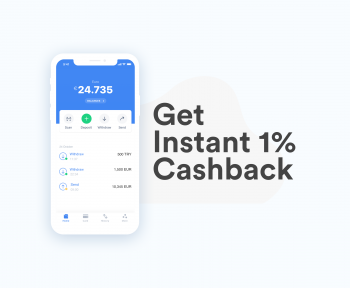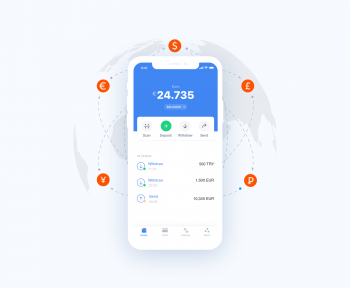“Don’t think about making art; just get it done. Let everyone else decide if it’s good or bad, whether they love it or hate it. While they are deciding, make even more art.” says Andy Warhol, the leading figure in the visual art movement known as pop art.
When Meta recently announced that NFT holders could share their very own NFTs on their Facebook and Instagram accounts, the news dropped like a bombshell to the NFT industry, worth 147.24 billion USD. From now on, all the NFT art can be shared on leading social media mediums by linking their digital wallets. This is not only revolutionary for the sector but also brings multiple question marks in its brown bag regarding the principles of “Art”.
What is art? What makes a duct-taped fresh banana an art piece? Can you compare “Der Kuss” by Gustav Klimt with the Balloon Dogs by Jeff Koons? Have you ever heard of the “Fountain “? In 1917, the most famous Dadaism artist of all time, Marcel Duchamp, placed a readymade sculpture, basically a porcelain urinal, in the inaugural exhibition staged at The Grand Central Palace. This would change the destiny of modern art forever in various ways. The dilemma of definitions would lead to a myriad of discussions since then.
Beginning of a new era for the conception and hard work of the avant-garde artists, today, we visualise much more than “The Night Watch” by Rembrandt. Although conservatives are highly apt to underline that colourful fingers of Post-Truth and Modernism stain the white dress of Art, the change looks hard to resist. At the end of the day, considering the human factor, what is apodictic? Right?
Actually, it is a bit comic to watch 21st-century artists getting furious against digital art NFT and NFT Meta news. Just a decade ago, they waged a reckless battle against conservatives in the name of Expressionism. Yet, they have externalised every single attempt in the art, including digital art. Canvases, steel, paints, walls, marbles, bronze, notes, cameras, and sometimes a porcelain urinal were their bridge to express their way of art. But all of a sudden, when the tool became pixels, codes and digitalization, the voices began to rise. More than this, the audience was millions of people from multiple changing communities, not the elitist art collectors.
What is NFT exactly?
To make it crystal clear for our readers, we better start with the definition of NFT. As the abbreviation of Non-Fungible Tokens, NFTs are specific digital certificates meaning authenticity licence of unique non-interchangeable assets. Since they are created on the blockchain of Ethereum, it is impossible to modify the license record or copy/paste a new NFT into existence.
In other words, it features an authenticity certificate of the piece. For instance, millions of copies of “The Birth of Venus” by the Italian artist Sandro Botticelli are hanging in restaurants, libraries, or art galleries worldwide. Yet, the original painting covers an entire wall on the first floor of Uffizi Gallery in Florence, Italy. The ownership of an NFT is the genuine holder rather than a screenshot or a saved file. An NFT can be replicated numerous times whilst the actual ownership record is stowed on a public ledger in which others can see the certificate of ownership.
Although it is generally mistaken that NFTs are a type of cryptocurrency, they are neither divisible nor fungible. They are structured on the same programming principles as cryptocurrencies but cannot be exchanged or traded equivalently. For an NFT artist, the canvas may be a photograph, a video, a computer game, a meme, a tweet, or just a logo. As it seems, the world of reality has its limits, whereas the world of imagination is boundless on the internet.
How to Sell NFT
According to the analysts holding the pulse of global art sales, a significant number of open-minded art collectors and galleries are urged to reserve some of these artefacts for a while. Unlike the traditional art industry, the decentralisation philosophy of cryptocurrencies shows itself. Thus, you will not encounter art clergies like snob curators, tinhorn art critics, and trickster galleries. To participate in online auctions, you need a reliable marketplace such as OpenSea, Rarible, Foundation, and SuperRare.
Creating an account on one of these platforms is no different than registering on any online shopping site. Once you insert your details, the most vital part comes: linking your digital wallet to the marketplace. When all is completed, you can upload your NFT as PNG, GIF, WEBP, MP4 and MP3 files, up to 30MB in size. The maximum capacity and types of files may vary from one website to another, yet most will also provide tools to convert them to suitable standards. When your piece is sold, the marketplace will send the amount to your crypto wallet in Ethereum. Please keep in mind that profit share and transfer fees will be subtracted from the subject amount.
How to buy an NFT is not a complicated process either. After finding your piece during your navigation, you must bid for the auction or offer a price directly before the auction. In both cases, when your offer or bid is accepted, you will adhere to completing the rest of the sale. A total value, a profit share from the platform, and a transaction fee will be debited from your registered crypto wallet. Hence, you will be able to receive the NFT and store it.
To Promote NFTs on Facebook and Instagram
Once again, history was about to repeat itself due to the low number of trustworthy platforms that you could count on the fingers of one hand. They held the market in their hands to manipulate what was up and down, just like gallery owners or museums back then. However, a game changer came from venturesome social media giant, Meta, revealing the integration of NFTs into Facebook and Instagram accounts.
For now, creators can display their digital collectables in more than a hundred countries in America, Africa, the Middle East, and the Asia Pacific. Supported blockchains are Ethereum, Polygon, and Flow for Instagram, while Meta also cooperates with third-party digital wallets for a better payment experience mutually. The company underlines that NFTs will play a considerable role in the future in many ways, and it must be primary to help make the NFT space more inclusive to all communities.
Consequently, NFTs are ingenious perspectives to art fringed with rules, bias, and classes for thousands of years. Key to the work firsthand, without any mediator, is a forthright twist compared to the orthodox auctions supervising behind sealed doors and word of mouth. Furthermore, creativity has never been subsidised before as it is today.
Therefore, the sky’s the limit now. Without the heavy chains of accepted regulations and greedy mediums, all of us can be an artist sharing our work openly. A winter photo you have taken, a reel of your beloved dog, a poem, a video of Aurora Borealis. There is no border in a kaleidoscopic world like ours. And best of all, a smartphone is more than enough for a start. After reading this article, please see one of the mind-blowing masterpieces of famous NFT artist Refik Anadol to understand the massive potential of NFT digital art.
Did you know Albert Einstein once said, “Art is standing with one hand extended into the universe and one hand extended into the world and letting ourselves be a conduit for passing energy?” It is undoubtedly impossible to disagree after seeing “Lady in Gold” by Gustave Klimt or “Liberty Leading the People” by Eugène Delacroix. Thus, stay creative! Stay with art!



